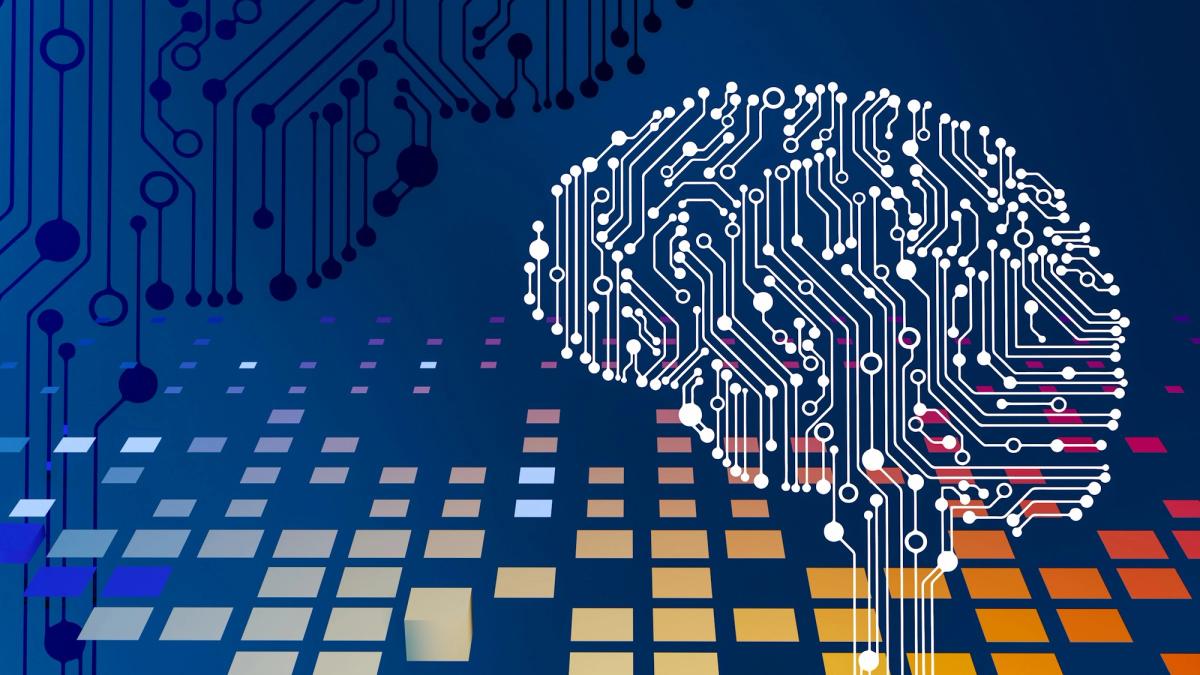A Detailed Edge AI vs Cloud AI Comparison
Published on Apr 27, 2025
Get Started
Fast, scalable, pay-per-token APIs for the top frontier models like DeepSeek V3 and Llama 3.3. Fully OpenAI-compatible. Set up in minutes. Scale forever.
Artificial intelligence is everywhere today, influencing everything from how we interact with our devices to how businesses make decisions. One area where AI is beneficial is in model machine learning deployment . Say, a retail store uses machine learning to optimize its inventory. The model can help the store predict which products will be in demand as the seasons change. The model must be updated regularly with new data to keep its predictions accurate. As AI continues to evolve, so do our choices when deploying AI models. In the case of Edge AI vs. cloud AI, each option has its strengths and weaknesses. The best choice will depend on your specific use case and business needs. This article will explain the differences between Edge AI and cloud AI to help you make an informed decision. One way to more easily choose between edge AI and cloud AI is with AI inference APIs. These can simplify the process of deploying AI models, so you can easily get back to achieving your business goals.
What is Edge AI and Its Key Benefits?

Edge AI uses artificial intelligence algorithms and models to perform data processing on devices rather than relying on a centralized cloud server. The key to this approach is the edge, the intermediate layer between the cloud and end devices that enables local computing.
By incorporating AI at this level, systems can process data and make intelligent decisions in real time:
- Minimizing latency
- Enhancing overall performance
How Edge AI Works: From Training to Deployment
In an edge AI setup, models are trained either in the cloud or on a central server and then deployed to the edge devices for inference. Once deployed, these models can run predictions locally without constant communication with the cloud.
Key Features of Edge AI
- Real-Time Processing: AI inference happens directly on the device, allowing for instantaneous responses and decisions.
- Reduced Latency: Since data doesn’t need to travel to a centralized server, the delay (latency) between data generation and action is minimized.
- Improved Privacy: Data remains on the device, reducing the risk of privacy breaches and lowering reliance on transmitting sensitive information to the cloud.
- Energy Efficient: Edge AI optimizes computations to run on resource-constrained devices, improving power efficiency.
Key Benefits of Edge AI
Edge AI brings many advantages for various industries, specifically where data privacy, real-time responses, and operational efficiency are essential. We have described some of the critical benefits as follows:
Faster Processing with Low Latency
Edge AI includes the capability of delivering real-time processing with less latency. In this, data gets processed on nearby edge nodes or the device itself, preventing data transmission back and forth to the cloud. This is quite beneficial for multiple uses, such as:
- Industrial automation
- Autonomous vehicles
- Healthcare monitoring
Rapid Response
The nearby proximity of process power often results in lightning-fast responses, which are impossible to match in traditional cloud-dependent systems.
Enhanced Privacy and Data Security
Edge AI boosts data privacy and security by minimizing the need to transfer sensitive details across various networks. It also minimizes risks like data breaches or potential security threats by ensuring the processing of:
- Personal data
- Financial transactions locally
This localized approach perfectly aligns with stringent data protection regulations. It creates trust in many sectors, such as:
- Healthcare
- Finance
Reduced Dependence on Internet Connectivity
Traditional cloud AI models often encounter issues in areas with slow or unreliable internet connections. Edge AI minimizes this problem by letting devices function independently or with constant cloud access. This is important for:
- Disaster response drones
- Smart agriculture
- Off-grid IoT installations
Consistent Performance
Edge AI offers consistent performance irrespective of connectivity status, making it a reliable solution for many essential operations.
Efficient AI Model Execution on Edge Devices
The latest model optimization and hardware innovation offer efficient AI execution on many resource-constrained edge devices, including:
- Cameras
- Smartphones
- Sensors
Developers can easily implement robust AI functionality by compressing models and optimizing various algorithms. This doesn’t require large data centers or supercomputers. It ensures AI capabilities, making them easily accessible on low-power devices. It also opens new possibilities for scalable and decentralized intelligence.
Lower Cloud Costs with Localized Processing
Edge AI minimizes cloud infrastructure and bandwidth costs. It ensures that only summarized or necessary data is sent to the cloud through local processing. Edge AI also minimizes data transfer volume and reduces the demand for expensive cloud computing resources. It enables businesses to increase ROI and get value for their investment.
Use Cases of Edge AI
Edge AI brings a higher possibility of data processing for fast decision-making, strengthening data privacy, minimizing latency, and improving decision-making. Let’s explore various use cases of Edge AI below:
AI-powered Surveillance and Security Systems
With edge AI, surveillance has become easier and smarter. AI algorithms work directly on many edge devices, including drones or cameras, ensuring:
- Behavior analysis
- Real-time facial recognition
- Threat detection
It improves response time and minimizes overall bandwidth costs, improving data security.
Real-time AI in Autonomous Vehicles
An autonomous vehicle relies heavily on real-time data analysis to navigate safely. Edge AI allows vehicles to process data from devices like radar sensors and cameras more quickly. It:
- Facilitates quick responses to dynamic road conditions
- Improves both safety and performance
Healthcare Wearables and Medical Devices
Edge AI also revolutionizes the healthcare industry. It ensures more responsive wearables and medical devices. Whether it’s fitness trackers or smartwatches, they can easily monitor vital signs such as:
- Oxygen levels
- Heart rates
- ECG in real time
These wearables have an enormous capability of detecting issues and also notify users and many healthcare providers quickly. They ensure early diagnosis and on-time interventions even without depending on continuous cloud connectivity.
Industrial IoT and Smart Manufacturing
Edge AI has also redefined industrial settings. Edge devices enabled with artificial intelligence can:
- Analyze equipment performance
- Predict maintenance requirements
- Detect real-time anomalies
This proactive approach is helpful in:
- Minimizing downtime
- Supporting quality control
- Maximizing operational efficiency
Local Adaptation
Edge AI also allows manufacturers to adapt quickly to changing conditions on the production line without the necessity of centralized data processing.
What is Cloud AI and Its Key Benefits?

As the name suggests, cloud AI represents using artificial intelligence with the help of cloud computing platforms. It enables developers and businesses to analyze robust AI capabilities, including natural language processing, machine learning, and computer vision, without needing on-premise infrastructure.Cloud AI allows users to automate tasks, analyze vast datasets, and create smart apps with:
- Greater flexibility
- Scalability
Cloud Leaders
Many cloud AI service providers have already gained a reputation on this horizon, including:
- AWS
- Google Cloud
- Microsoft Azure
Key Features of Cloud AI
- Scalability: Cloud infrastructure can scale dynamically to handle large amounts of data, enabling complex and resource-heavy AI models to run efficiently.
- Centralized Storage and Processing: Cloud AI centralizes data storage and processing, making it easier to train models on large datasets and integrate data from multiple sources.
- Computational Power: Cloud platforms provide access to advanced GPUs and TPUs, making them ideal for training deep learning models and handling high-performance tasks.
- Remote Accessibility: Cloud AI allows remote access to AI models and data, enabling distributed teams to collaborate on AI projects.
How Cloud AI Works
In a cloud AI architecture, data is collected from devices or systems and transmitted to a remote cloud infrastructure for processing. Cloud servers handle training and inference, leveraging high computational power to process large volumes of data in real time or asynchronously.
Key Benefits of Cloud AI
Cloud AI can combine the accessibility and scalability of various cloud platforms by leveraging the potential advantages of AI technologies. It allows businesses to manage, deploy, and scale their AI solutions completely. Let’s explore some other benefits of cloud AI below:
Scalable and High-performance AI Processing
The significant advantage of cloud AI is its capability to scale based on demand. Google Cloud, AWS, or Azure provides complete infrastructure that handles vast workloads even without the necessity of on-premise hardware.
This scalability is beneficial for training deep learning models or processing vast amounts of real-time data. It allows businesses to adjust the computing power based on their requirements, ensuring higher performance during peak hours. It minimizes the time needed for complex AI tasks.
Access to Large-scale Datasets for Training
Cloud AI scales based on demand. Many leading cloud providers offer infrastructure capable of handling vast AI workloads without needing on-premise hardware. This scalability helps train deep learning models or process vast amounts of real-time data. Businesses find it convenient to train various deep learning models or process vast amounts of real-time data.
They also find it convenient to adjust computing power based on their requirements. It offers high performance even during peak hours.
Seamless AI Model Updates and Deployment
Updates to AI models involve handling tasks like:
- Server downtime
- Manual intervention
- Configuration issues
Cloud AI also allows for automating updates and deployments, even remotely. MLOps and DevOps are vital in simplifying the testing, version control, and rollout of several of the latest AI models. CI/CD ensures models are up-to-date with:
- Fewer disruptions
- Minimized operational risk
- Improved time to market
Centralized AI Management and Monitoring
Cloud AI platforms provide centralized dashboards and management tools. These are useful for many organizations to”
- Analyze model performance
- Maintain compliance
- Track anomalies
The centralized control offers complete visibility across various AI operations, which makes it convenient to:
- Audit
- Scale
- Boost processes
Proactive Resolution
Be it alerting mechanisms or real-time analytics, it can be configured to ensure models function as expected, which provides proactive issue resolution.
Integration with Cloud-based Services
Cloud AI integrates smoothly with other cloud-native services like:
- Databases
- Data lakes
- API
- Workflow automation tools
Seamless Integration
An AI-driven recommendation engine can connect to an e-commerce platform hosted on the same cloud. This interoperability minimizes the complexity of AI integration into various existing systems and allows businesses to innovate quickly. Developers also leverage many pre-built APIs and services, including:
- Computer vision
- Language processing
- Machine learning
Use Cases of Cloud AI
Businesses can harness the computational power of cloud AI to implement modern AI solutions even without making any heavy infrastructure investments. Let’s explore some of the ways enterprises leverage cloud AI:
AI-driven Big Data Analytics
With the integration of Artificial Intelligence with cloud warehouses and lakes, businesses can conveniently uncover:
- Trends
- Hidden patterns
- Correlations, in real time
AI-based analytics help many industries, such as finance, retail, and healthcare, make data-driven decisions quickly. eCommerce organizations leverage AI to:
- Check customer behavior
- Provide personalized recommendations
Large-scale Natural Language Processing (NLP)
Cloud platforms are credited with the immense rise of natural language processing (NLP). Cloud AI ensures the large-scale processing of textual data to derive:
- Sentiment
- Meaning
- Context
Businesses implement NLP to power various operations such as:
- Sentiment analysis
- Language translation
- Document summarization
NLP Capabilities
Cloud-based NLP models can also:
- Understand and respond to many customer queries
- Redefine legal document reviews
- Automate content moderation on social media
AI Model Training and Optimization
Training sophisticated AI models requires enormous computing resources, which the cloud barely offers. Many cloud AI platforms provide pre-configured environments with robust TPUs and GPUs to:
- Speed up model training
- Provide various auto-optimization features
Developers can iterate, experiment, and deploy models smoothly without being stressed about hardware limitations.
Smart Assistants and Chatbots
Developers also use cloud AI to develop chatbots that leverage the power of:
- Machine learning
- NLP
Chatbots and virtual assistants can:
- Automate workflows
- Handle customer inquiries
- Offer 24/7 support
Chatbot Applications
Cloud-based chatbots are used across multiple industries, from healthcare to banking. They are helpful for:
- Boosting customer engagement
- Minimizing operational costs
Integrating CRM with ERP systems also improves their capability of delivering personalized responses for intelligent automation.
Related Reading
A Detailed Edge AI vs Cloud AI Comparison

Architecture
Edge AI
- The processing of data is performed locally on edge devices.
- There is no need to rely on remote servers for decision-making.
- Due to local processing, bandwidth usage and latency are reduced, and data transfer is minimized.
- Data privacy and autonomy are intact.
- However, edge devices’ computing power is limited, so the system faces resource constraints.
Cloud AI
- Data processing is centralized.
- AI model execution is performed on remote cloud servers.
- Has access to extensive resources, and the system is highly scalable.
- A significant requirement is stable internet connectivity; failing which, there may be latency issues.
- Privacy and security concerns may arise since data is stored on remote servers or in the cloud.
- It is more accessible to advanced AI functionalities.
Latency and Real-Time Responses
Edge AI
- Edge AI has reduced latency as data processing is local.
- Real-time responses are also improved considerably.
Cloud AI
- Delaying sending data to and from cloud servers may result in higher response times.
- Real-time jobs may slow down.
Privacy and Security
Edge AI
- As data is local, its privacy and security are enhanced.
- Sensitive data is localized and protected on edge devices.
- Minimum risk of data breaches.
Cloud AI
- The risk of breaches is higher as data is transmitted back and forth.
- Cloud platforms should employ reasonable security measures and improve on them consistently.
Computing Power and Storage Cost
Edge AI
- Computing power is limited and depends on the type of edge device used.
- Storage capacity also depends on the type of edge device used.
- Storage and computing power limitations may hinder the complexity of AI models that can be deployed.
Cloud AI
- The processing power of cloud servers is high, and they have vast storage capacity.
- Can deploy models that require high-performing computational resources.
- Have access to massive datasets.
Dependence on Internet Connectivity
Edge AI
- Once deployed, Edge AI does not rely much on internet connectivity.
- Edge AI is more suitable for deployment where there are connectivity issues.
Cloud AI
- One of the major requirements for Cloud AI is stable internet connectivity, as there is continuous data transmission.
- Performance of the system is compromised if the network connection is unstable.
Scalability & Power
Edge AI
- Limited scalability as resources are limited, although advancements in AI chips have considerably improved capabilities.
Cloud AI
- Highly scalable with massive computational resources.
Real-World Applications
Edge AI
- Autonomous Vehicles
- Industrial IoTs
- Healthcare Wearables
- Smart Cities
Cloud AI
- Big Data Analytics
- Natural Language Processing (NLP)
- Recommendation Systems (used mainly by retailers)
- Training Deep Learning Models
Edge AI processes data locally on the device itself or nearby edge servers. It enables AI algorithms to function independently, without depending on remote infrastructure. Cloud AI relies on a centralized data center, where robust servers operate on:
- Complex models
- Dtore large data volumes
Latency and Response Time
Latency plays a significant role in applications that need real-time responses. Edge AI offers ultra-low latency as the processing takes place locally. Many devices, such as drones, autonomous vehicles, and industrial robots, benefit from the fast decision-making capabilities of edge AI.Cloud AI ensures data transmission to and from the cloud. Though it can handle many complex tasks, the delay tends to be detrimental in many time-sensitive applications. Some of them include:
- Collision avoidance systems
- Medical diagnostics systems
Internet Dependency
Edge AI can function with a low or even no internet connection. After the AI model is implemented on the devices, it works offline, making it a perfect choice for many remote locations. Cloud AI needs a highly stable internet connection to work smoothly. It ensures a proper upload and processing of data in the cloud and download of results. That’s why cloud AI is not a good option for those in remote locations with poor internet connectivity.
Scalability and Resource Management
Cloud AI has an edge over its counterpart for scaling operations and managing resources more efficiently. It enables businesses to implement the largest AI models, manage larger datasets, and scale up and down as needed using virtual infrastructure.The hardware of many edge devices restricts Edge AI. Since power, storage, and memory are constrained, it’s not appropriate for running large-scale models. It also processes vast datasets even without frequent optimizations or updates.
Privacy and Security
Since edge AI processes data locally, it’s the perfect option for privacy-sensitive environments. It prevents data from being transmitted to a central server, reducing the risks of data breaches and ensuring full compliance with regulations such as GDPR.
Cloud AI necessitates data being sent to the cloud. This opens up various potential vulnerabilities during data storage and transmission. Though it uses multiple security protocols and encryption, it poses specific threats to sensitive data.
Power Consumption
Edge AI is energy-efficient and ensures low energy consumption. Many devices, such as smart cameras and wearables, benefit directly from operating AI locally, even without quickly draining batteries.Due to its large data centers, cloud AI consumes more power than edge AI. Since power is not a limiting factor in the cloud, it prioritizes performance over efficiency.
When to Use Edge AI vs. Cloud AI?
Applications that require instantaneous responses, such as facial recognition, object detection, or voice commands, benefit from low-latency edge AI.
Data Privacy is a Concern
Edge AI provides better privacy control if your application deals with sensitive data that shouldn’t be transmitted to the cloud (e.g., healthcare data).
Operating in Low-Connectivity Environments
If your devices need to function in remote areas without constant internet access, Edge AI is more reliable than Cloud AI.
Example
A smart factory uses Edge AI to detect machinery faults in real time. When a sensor detects an anomaly, the system immediately stops the machine to prevent further damage, reducing downtime and costs.
Cloud AI provides the necessary computational power if your application processes large volumes of data or requires running resource-intensive AI models.
Collaboration and Centralized Management
Cloud AI is ideal for distributed teams that need access to:
- Shared models
- Datasets
- Infrastructure
Long-Term Data Storage and Analytics
Cloud AI's centralized architecture is optimal if your application relies on storing, analyzing, and drawing insights from vast historical data.
Example
A retail company uses Cloud AI to analyze millions of customer transactions daily. Cloud-based recommendation systems personalize product suggestions, leading to:
- Better customer engagement
- Increased sales
Related Reading
Start Building with $10 in Free API Credits Today!
Inference delivers OpenAI-compatible serverless inference APIs for top open-source LLM models, offering developers the highest performance at the lowest cost in the market. Beyond standard inference, Inference provides specialized batch processing for large-scale async AI workloads and document extraction capabilities designed explicitly for RAG applications.
Start building with $10 in free API credits and experience state-of-the-art language models that balance cost-efficiency with high performance.





